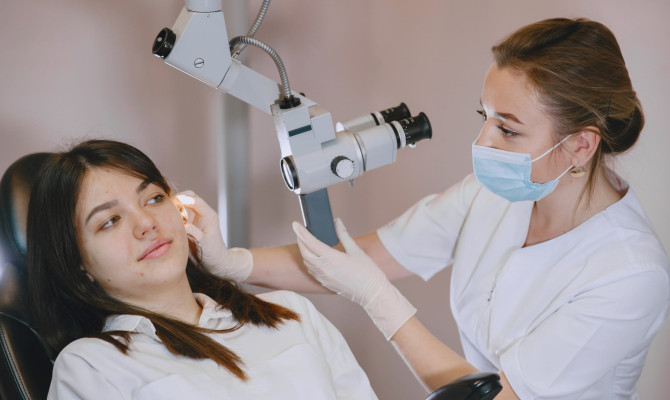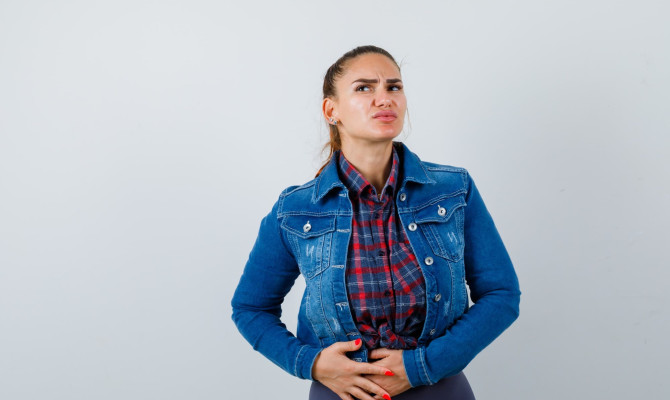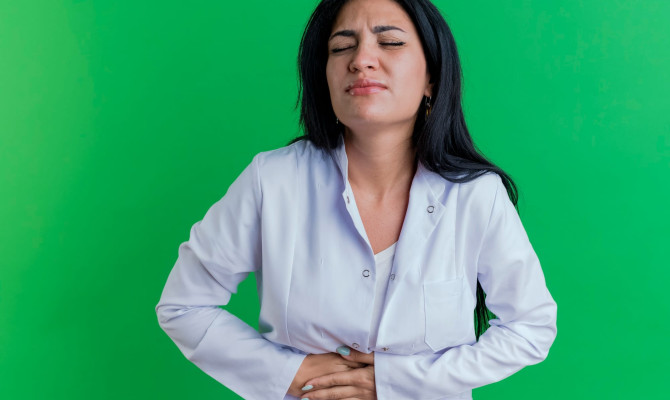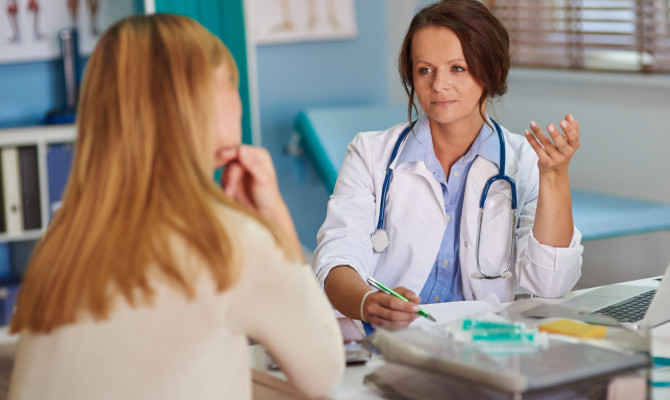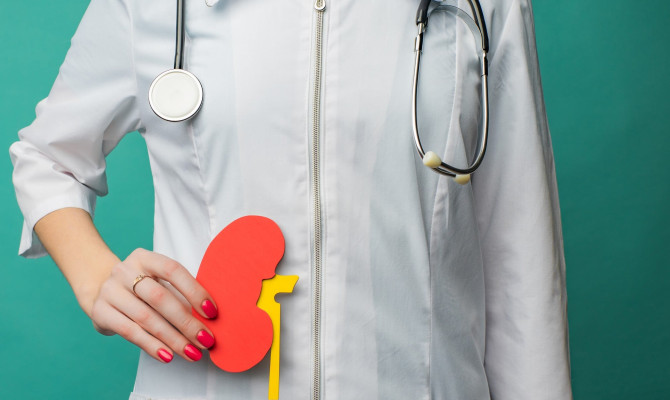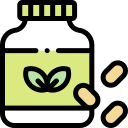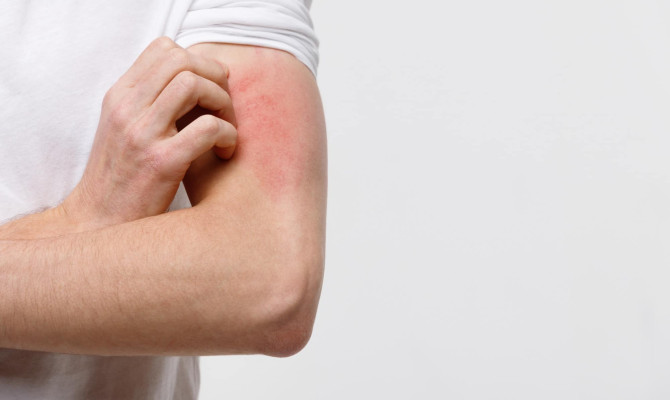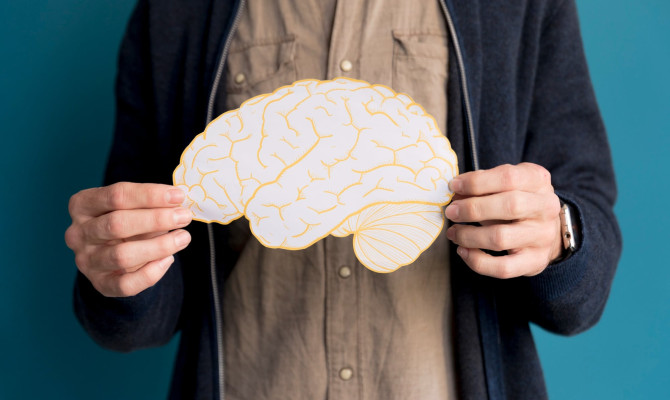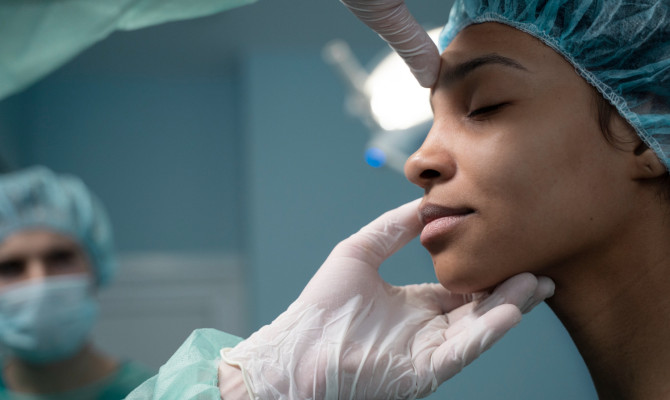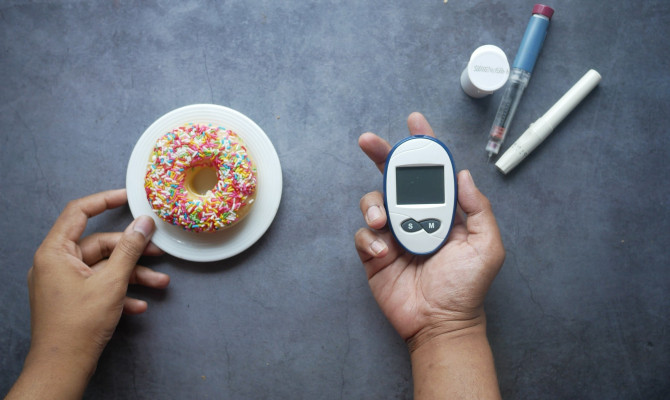Hemorrhoids: Causes, Symptoms, and Treatment

- Hemorrhoids
- 17 Aug 2023
Overview
What are Hemorrhoids?
Hemorrhoids is a medical condition in which blood vessels bulge out. These vessels are situated in or around the anal area. Hemorrhoids, also called piles, are a universal form of swelling. The flexible bodily movements are normally managed by the blood vessels present in the anus. When these blood vessels enlarge, it leads to the condition known as Hemorrhoids1Overview| Researched based study from Niddk.nih.gov
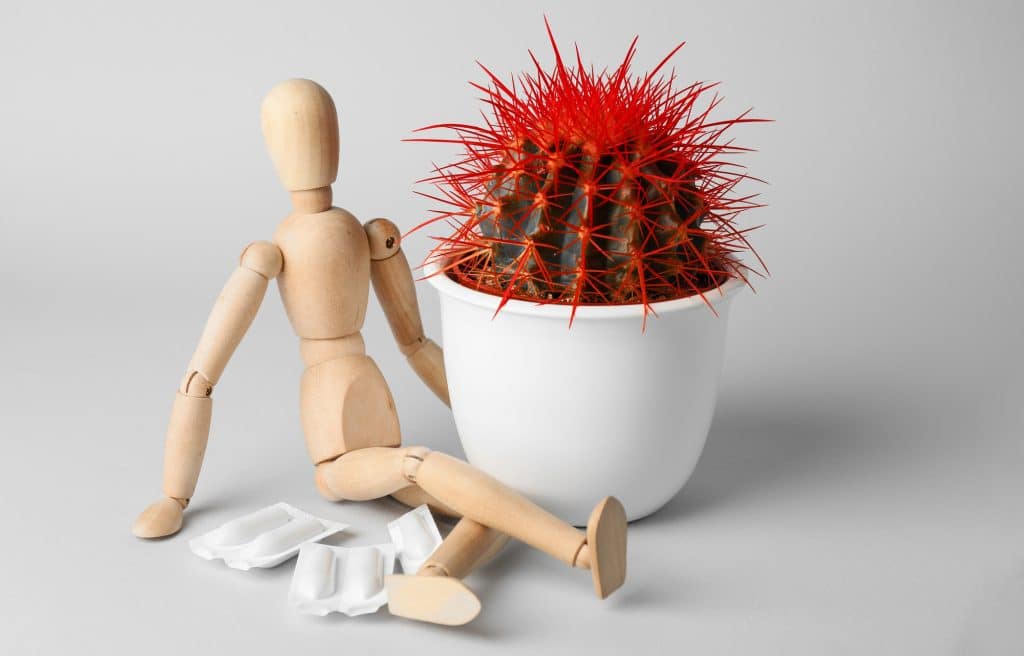
How do Hemorrhoids occur?
- The anus is coated with the tissues and supplied by the blood vessels. These vessels help in closing the anus. In some cases the anal vessels undergo dilation (otherwise they are normally present). The engorged vessels and adjacent tissue can coalesce into one or multiple masses to form a hemorrhoid.
- Hemorrhoids typically manifest as small, circular, and discolored protrusions.
- Hemorrhoids protruding from the anal canal may be palpable either externally or internally.
Types
Types of Hemorrhoids
Hemorrhoids can be classified as:
Internal Hemorrhoids
- They occur in the lower rectum.
- Internal Hemorrhoids have the potential to prolapse or protrude beyond the anal opening, although they are painless. Mucus and fecal matter gets collected in the itchy protruded mass leading to “Pruritus ani”.2Types| Researched based study from Fascrs.org Excessive wiping in an attempt to relieve itching might worsen the condition.
External Hemorrhoids
- They form beneath the skin in the perianal region.
- The most annoying hemorrhoids are external ones because the surrounding skin gets inflamed and erodes. You can feel a palpable mass around the anus. This mass is a blood clot formed within the external hemorrhoid as a result of severe pain. The breakdown of clot typically results in the formation of a skin tag, which may cause itching or irritation.
Prolapsed Hemorrhoids
- Internal and external hemorrhoids may prolapse, resulting in their extension beyond the anal opening. Prolapsed Hemorrhoid3Types| Researched based study from Nlm.nih.gov can result in bleeding and pain.
Simultaneous occurrence of internal and external hemorrhoids is possible in some individuals.
Causes
Causes of Hemorrhoids
Certain factors may boost the likelihood of developing piles, those are:
- Pregnancy
- Family History
- Impede blood flow of vessels running in anal region
- Aging
- Food Habits
- An illness
- Other
Interference in the blood flow rate within vessels
- Constipation
- Experiencing heavy stool passage.
- Experiencing difficulty during defecation.
- Prolonged toilet sitting.
These factors impede the expected flow rate of blood within the vessels resulting in the development of hemorrhoids.
Advancing age
- The weakened supporting tissues are the risk factor for developing hemorrhoids.
Family history
- Genetics may contribute to the onset of hemorrhoids. Ehlers-Danlos syndrome (EDS)4Causes| Researched based study from Nlm.nih.gov is an inherited disorder characterized by collagen deficiency, which can result in pelvic floor tissue dysfunction. EDS often presents with hemorrhoids that indicate rectal prolapse. It is a condition where the bowel sticks out partially or entirely from the body.
Pregnancy
- External Hemorrhoids in females are a common finding during the third trimester of pregnancy. It is because the pelvic pressure increases and pressurizes the area surrounding the anus and rectum. Hemorrhoids are generally harmless to both mother’s and fetal health, and they tend to resolve spontaneously postpartum.
Medical conditions that can result in clinical features identical to hemorrhoids
Various gastrointestinal disorders may trigger rectal bleeding and symptoms of hemorrhoids. They are:
- Cancer of the colon.
- Ulcerative colitis.
Poor food habits
- Incorporating a lot of spicy and fatty foods on a regular basis can trigger severe hemorrhoids.
Additional factors include
- Ascites
- Anal intercourse
- Physical inactivity
- Anal injury
- Weakened pelvic floor muscles.
- Significant liver or heart disease.
- Experiencing chronic cough.
- Heavy lifting.
- Obesity.
- Significantly low-fiber diet.
- Inadequate hydration.
Symptoms
Symptoms of Hemorrhoids
Symptoms when present, may include:
- The appearance of bright red blood along with itchy anus after pooping.
- A lump drooping down the anus. It can be manually reduced after passing the stool.
- Pain and a sense of fullness in the anus, even after using the restroom, or the impression that one’s bowels haven’t been properly emptied.
- Mucus discharge after passing the stool.
- Perianal soreness, irritation, and edema5Symptoms| Researched based study from Healthdirect.gov
Hemorrhoids are usually left unnoticed until there is a reduction or cut off in their blood supply.
What do piles feel like?
- Minor internal hemorrhoids show no symptoms due to the absence of pain receptors in their location.
- External hemorrhoids with mucus discharge will cause discomfort and pruritus.
What is the duration of piles?
- The duration of piles is variable and indeterminate. Small outbreaks may resolve spontaneously within a few days, whereas significant external hemorrhoids can demand medical intervention and a longer healing period.
Symptoms of piles may vary based on their size, location, and grade.
Diagnosis
Diagnosis of Hemorrhoids
Hemorrhoids can be diagnosed by a medical history analysis and physical examination conducted by a medical professional.
- External hemorrhoids can be diagnosed through a physical examination of the perianal region.
- Internal hemorrhoids are diagnosed through a digital rectal exam. An additional procedure may be conducted to visually inspect the anus and rectum.
Checking Health history
The medical professional will request your medical records and present symptoms. He will enquire about your dietary patterns, bowel movements routines, utilization of enemas and laxatives, and present medical ailments.
Your physician will examine the perianal region to check the presence of:
- Nodules or edema.
- Prolapse/protrusion of internal hemorrhoids through the anal opening.
- Bloody mass of External hemorrhoids
- Rectal discharge of fecal matter or mucus.
- Skin discomfort.
- Skin tags are residual skin resulting from the dissolution of a clot of blood in an external hemorrhoid.
- Anal fissures are a tear in the anus that can result in symptoms such as itchiness, pain, or bleeding.
A digital rectal examination is performed to:
- Assess the muscular tone of your anal sphincter.
- Assess for tenderness, bleeding, internal hemorrhoids, and palpable masses.
Procedures
The diagnostic procedures for internal hemorrhoids may include:
Anoscopy
- An anoscopy6Diagnosis| Researched based study from Nlm.nih.gov involves the use of an anoscope to visualize the mucosal lining of the anal canal and near rectum. A medical professional will perform a thorough examination of the anal and lower rectal tissues to detect indications of lower gastrointestinal issues.
Proctosigmoidoscopy
- Rigid proctosigmoidoscopy involves the use of a proctoscopy to visualize the mucosal lining of the rectum and distal colon, and is comparable to anoscopy.
- A rectal and lower colon examination will be conducted by a physician to detect indications of lower gastrointestinal issues.
- Internal hemorrhoids can be diagnosed by a doctor during routine rectal and colon examination. The procedures comprise colonoscopy and flexible sigmoidoscopy.
Treatment
Treatment of Hemorrhoids
Home-Based Treatments
A blend of household treatments can be employed to treat hemorrhoids. Several preferred choices include:
Sitz bath
- A sitz bath is a therapeutic maneuver that involves sitting in warm water for about 10-20 minutes to relieve discomfort or pain. Inflammation can be decreased even by using Baking soda or Epsom salts.
- Once you’re done with the bath make sure to clean the anal area with a cloth and pat it dry gently. Avoid rubbing or wiping vigorously. You can also use a hair dryer at low power to dry out the area.
Avoid painkillers
- Opioid-containing painkillers like co-codamol must be escaped because of their association with constipation. Paracetamol can be used7Treatment| Researched based study from Mayoclinic.org
Aloe Vera gel, oil from coconuts and Vitamin E oil
- These soothing agents can be used to reduce minor hemorrhoids.
Be hygienic
- After pooping, it is a necessity to use lotion-infused toilet paper or wet wipes to delicately cleanse the anal area.
Ice application
- Ice packs are effective in reducing swelling and pain. Note that, their usage should not exceed 15 to 20 minutes. Extended exposure may result in frostbite.
Witch hazel
- This astringent has anti-inflammatory and antimicrobial properties. It can be applied with a cotton pad. Witch hazel can be mixed in a sitz bath for better results. It relieves minor pain and discomfort.
Apply OTC lotions
- Consider employing over-the-counter hydrocortisone-containing lotions, ointments, or pads.
Dietary changes to manage Hemorrhoids
Changing in food habits helps a lot in alleviating the pain and discomfort, Suggestions for dietary changes are:
Add Fibers
- Maintaining a well-balanced nutrition plan is crucial in preventing or managing diet-related hemorrhoids. Adequate fiber intake is essential to ensure that your stools remain mushy, formed, and regular. This is one of the key factors in keeping hemorrhoids at bay.
- Soluble fiber foods such as Oats: It contributes to the maximum amount of daily fiber intake.
- Insoluble fiber foods such as roughage: The recommended8Treatment| Researched based study from Nlm.nih.gov daily fiber intake for the majority of individuals is 30-35 grams.
- Supplementing with fiber: In cases where a high-fiber diet fails to prevent constipation, bulking agents such as ispaghula, methylcellulose, bran or sterculia can be taken as fiber supplements.
Enough hydration
- Lots of water along with lots of fibers is the quick fix to hemorrhoids
- 8-10 glasses of water each day keeps the hemorrhoids away.
Foods to eat
- Legumes and nuts are fiber-dense ingredients that can enhance the taste of dishes such as salads, chilis, and rice-based meals.
- Almonds.
- Edamame.
- Dark leafy green vegetables, like lettuce or spinach, in salads.
- Oat bran.
- Zucchini.
- Peas and beans.
- Select fruits with thin skin like apples, pears, and plums to obtain the desired fiber and taste.
Foods to avoid
These foods will worsen hemorrhoids.
- Meat.
- Processed meals like pizza, canned foods, street food etc.
- Milk products such as ghee, cheese, stored whip cream and ice cream.
Over-the-counter pain relievers
The OTC medications are:
NSAIDs
- Oral NSAIDs, including naproxen (Aleve) and ibuprofen (Advil), successfully reduce mild to moderate hemorrhoid symptoms such as pain, swelling, and redness.
Anesthetics
- Lidocaine-based topical anesthetics may provide relief from pain. Lidocaine puts its pain relieving properties by inducing local anesthesia on the nerves located at the pain site.
Topical Rectal creams
- Hydrocortisone9Treatment| Researched based study from Nhs.uk is a steroidal hemorrhoids cream that can be purchased over the counter in 1.0% strength. It delivers its anti-inflammatory goals by lowering the immune system’s response.
- Rectogesic ointment is a topical medication that shrinks hemorrhoids faster. Rectogesic is a prescription-only medication containing 0.2% glyceryl trinitrate (nitroglycerin).
OTC stool softeners
OTC stool softeners minimize constipation by softening stools. They are commonly referred to as emollient laxatives.
- The active cube in stool softeners is Docusate sodium.
- A number of these products are commonly used laxatives, including Ex-Lax Gentle Strength®, Gentlax S®, Senokot S®, Correctol 50 Plus®, and Peri-Colace®.
Non surgical procedures
The recommended non invasive therapies for hemorrhoids include:
Banding
- The doctor will apply an elastic band over the hemorrhoid to decrease its blood flow. The necrotic tissue will undergo breakdown and slough off within one to two weeks, followed by spontaneous healing of the affected area.
Sclerotherapy
- The doctor will administer an oily solution via injection to promote shrinkage of the hemorrhoids.
Bipolar diathermy
- Electrical stimulation is given to burst the pile under observation.
Infrared coagulation
- Infrared coagulation therapy involves the application of infrared light to specific areas of hemorrhoids. This will stop the blood flow and decrease the size of the clot.
Surgical procedures
Surgical procedures opt for severe cases, are as follow
Hemorrhoidectomy
- Surgical removal of hemorrhoids is a viable treatment option done under general anesthesia for cases where banding or other methods have been ineffective. This procedure gives a favorable outcome.10Treatment| Researched based study from Nlm.nih.gov
Stapled haemorrhoidopexy
- A circular stapler is used to cut a small round segment of the anal canal. This results in the retraction of the piles into the rectum. This will reduce the blood supply to the hemorrhoids, followed by shrinkage of swelling.
- The cutting procedure for removing piles is less painful than the conventional surgical method due to its location above the piles.
Hemorrhoidal artery ligation
- In this technique the hemorrhoidal arteries are tied up leading to reduction of the hemorrhoidal tissue.
Complications
Complications of Hemorrhoids
There is no significant correlation between hemorrhoids and a risk of colorectal cancer. Postoperative complications may arise from hemorrhoid surgery.
Possible inclusions are:
Hemorrhage
- Prolonged hemorrhagic episodes from hemorrhoids can result in anemia.
Infection
- You can acquire peritonitis or streptococcus bovis infection due to an infected hemorrhoid.
Strangulated hemorrhoids
- When the muscles in the anal region constrict and block the blood flow to a prolapsed internal hemorrhoid it will lead to complicated Strangulated hemorrhoids.
Fecal incontinence
- A condition characterized by the loss of voluntary control over bowel movements, is a rare occurrence that may be corrected through surgical intervention.
Anal fistula
- An anal fistula 11Complications| Researched based study from Springer.com is a limited passage formed between the anal tract and the perianal skin.
Recurrence of hemorrhoids
- Hemorrhoids are typically treated with surgery. The lasting effectiveness of hemorrhoid surgery is based upon the level to which a person can modify their daily bowel movements in order to prevent constipation and straining. The recurrence rate of hemorrhoids after surgery is approximately 5%.12Complications| Researched based study from Nlm.nih.gov
Prevention
Prevention of Hemorrhoids
Lifestyle modifications
- Regular physical activity can help prevent prolonged sitting.
- Consuming a high-fiber diet consisting of foods that prevent hemorrhoids.
- Avoiding too much during defecation.
Add foods recommended by a professional in treating hemorrhoids for their preventative properties
- Whole grains like oats, rye, corn, barley, quinoa, and brown rice.
- Legumes, which involves lentils, peas, beans, soy, garbanzo beans, and peanuts.
- Vegetables like radish, turnip, kale, broccoli, cauliflower, cabbage, and sprouts.
- Vegetables having roots such as potatoes, carrots, and beets.
- Fruits like apples, muskmelon, mulberries, raspberries, and pears.
Hemorrhoids are a prevalent health condition among adults due to their inactive lifestyle, insufficient physical activity, and consumption of unhealthy food. Hemorrhoids can be prevented by maintaining a nutritious diet that includes foods known to prevent their occurrence.
Prevalence
Prevalence of Hemorrhoids
Globally, hemorrhoids have a prevalence rate of 4.4% 11Prevalence| Researched based study from Springer.com in the general population. Approximately 50% of Americans develop hemorrhoids by the age of 50, with a minority seeking treatment, as reported by the HD Treatment Center.
- Hemorrhoids affect roughly 10.4 million individuals in the United States. It has an annual incidence of 1 million new cases. Surgery is required for 10-20% of new cases.
- The HD Treatment Center reports that females constitute 25% and males constitute 15% of individuals above 45 years who develop hemorrhoids. Studies indicate that men are more likely to seek treatment for hemorrhoids compared to women.
- Individuals residing in rural areas and possessing a higher socioeconomic status exhibit a greater propensity for hemorrhoidal affliction.
Bottom Line
The Bottom Line
Hemorrhoids are a common health issue among individuals over the age of 50. Around two thirds of grown-ups experience piles at some point in their lifetime.
It is advisable to communicate openly with your healthcare provider regarding your symptoms, without feeling overly self-conscious. Hemorrhoids commonly necessitate medical intervention, including medical treatment and surgical procedures, during middle age. Precautionary measures can be opted to avoid recurrence of hemorrhoids.
Any feedback on this article?
 This Articles content was accurate
This Articles content was accurate Very Informative Article
Very Informative Article I have a question or a comment
I have a question or a comment
 This article contains inaccurate content
This article contains inaccurate content This article was not helpful
This article was not helpful I have a question or a comment
I have a question or a comment
We appreciate your helpful feedback!
Checkout our social pages
References
-
National Institute of Diabetes and Digestive and Kidney Diseases
Definition & Facts of Hemorrhoids | Overview
-
The American Society of Colon and Rectal Surgeons
Hemorrhoids: Expanded Information | Types
-
National Library of Medicine
Hemorrhoids: From basic pathophysiology to clinical management | Types
-
National Library of Medicine
Ehlers-Danlos Syndrome—Hypermobility Type and Hemorrhoids | Causes
-
Health Direct
Haemorrhoids | Symptoms
-
National Library of Medicine
Anoscopy | Diagnosis
-
Mayo Clinic
Hemorrhoids | Treatment
-
National Library of Medicine
Hemorrhoids: Modern Remedies for an Ancient Disease | Treatment
-
National Health Service
Hydrocortisone for piles and itchy bottom | Treatment
-
National Library of Medicine
Hemorrhoidectomy | Treatment
-
Springer Nature
The prevalence of hemorrhoids in adults | Complications | Prevalence
-
National Library of Medicine
Complications of hemorrhoids | Complications












